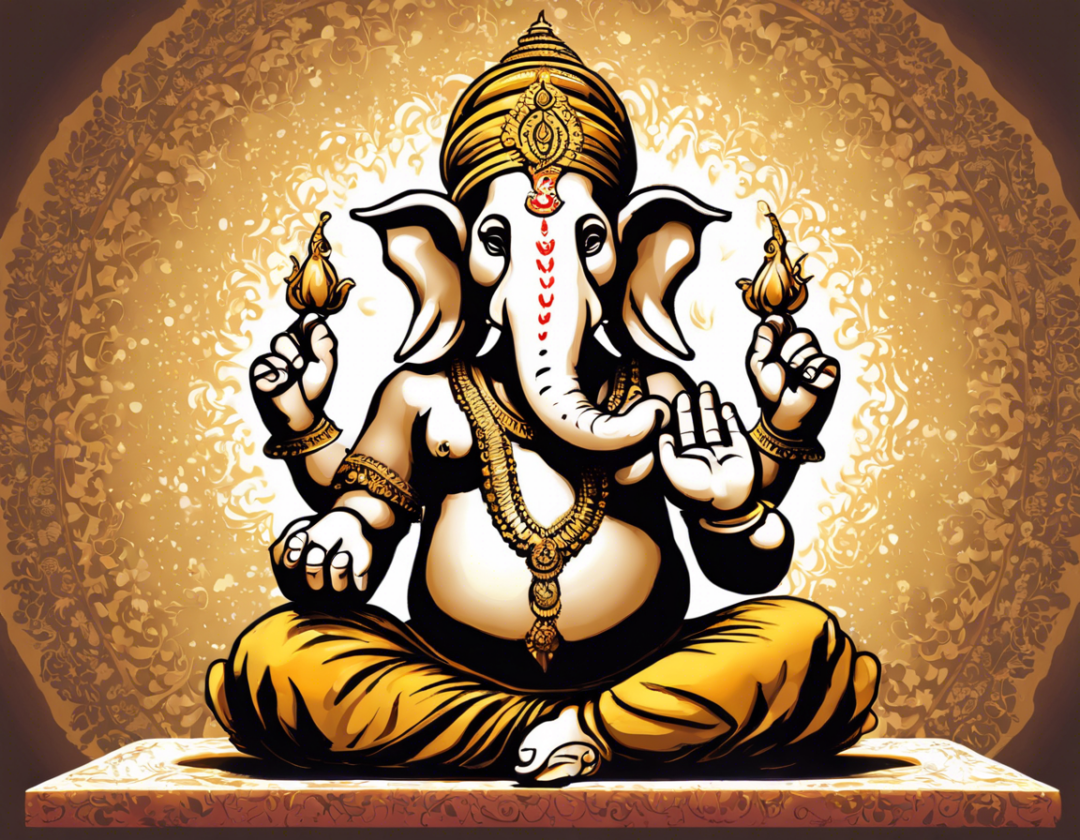Introduction
Ganesh Puja, also known as Ganesh Chaturthi, is a significant Hindu festival that celebrates the birth of Lord Ganesha, the remover of obstacles, and the God of wisdom, prosperity, and good fortune. The festival is observed with great fervor and enthusiasm in various parts of India and by Hindus around the world. It typically falls in the months of August or September, lasting for 10 days, with the last day culminating in the immersion of Lord Ganesha’s idol in water bodies, symbolizing his return to Mount Kailash.
History and Significance
The history of Ganesh Puja dates back to the Maratha ruler, Chhatrapati Shivaji Maharaj, who initiated the festival to promote unity and nationalism among his subjects. Over the years, the festival gained widespread popularity and became a public event celebrated with grandeur, especially in the state of Maharashtra.
Customs and Traditions
– Idol Installation: On the first day of the festival, devotees bring home or set up large idols of Lord Ganesha in temples or pandals.
– Prayers and Offerings: Throughout the festival, elaborate prayers, known as aartis, are performed multiple times a day, accompanied by offerings of modak, a sweet delicacy loved by Lord Ganesha.
– Visarjan: On the final day, the idol of Lord Ganesha is immersed in water, symbolizing his journey back to his celestial abode.
Celebrations Across India
Ganesh Puja is celebrated with unique regional traditions and customs in various parts of India. In Maharashtra, the festival is marked by processions, music, dance, and community feasts. In Karnataka and Andhra Pradesh, the festival is known as Ganesh Chaturthi and is celebrated with great zeal, with families installing idols of Lord Ganesha in their homes. In Tamil Nadu, the festival is observed as Pillayar Chaturthi, with special prayers and offerings made to Lord Ganesha.
Environmental Concerns and Eco-Friendly Celebrations
In recent years, there has been a growing awareness about the environmental impact of Ganesh Puja, particularly the immersion of idols made of non-biodegradable materials into water bodies. To address this issue, many communities are opting for eco-friendly idols made from clay or natural materials. These idols are designed to dissolve quickly in water without polluting the environment, promoting a more sustainable way of celebrating the festival.
FAQs (Frequently Asked Questions)
-
What is the significance of Lord Ganesha in Hindu mythology?
Lord Ganesha is revered as the God of wisdom, prosperity, and remover of obstacles. He is worshipped at the beginning of any new venture or undertaking to seek his blessings for success and prosperity. -
How long does Ganesh Puja last?
Ganesh Puja typically lasts for 10 days, culminating in the immersion of Lord Ganesha’s idol on the final day. -
What are the traditional offerings made to Lord Ganesha during the festival?
Modak, a sweet dumpling filled with jaggery and coconut, is considered Lord Ganesha’s favorite offering and is made in abundance during the festival. -
Is Ganesh Puja only celebrated in India?
No, Ganesh Puja is celebrated by Hindus worldwide, especially in countries with significant Indian diaspora communities. -
What are some eco-friendly practices to follow during Ganesh Puja?
- Opt for eco-friendly idols made from clay or natural materials.
- Avoid using harmful chemicals or paints on the idols.
-
Opt for immersion in artificial tanks or bodies of water designated for the purpose.
-
Are there any specific prayers or mantras dedicated to Lord Ganesha during Ganesh Puja?
Yes, there are several prayers and mantras dedicated to Lord Ganesha, with the “Ganesh Gayatri Mantra” and “Ganesh Chalisa” being commonly recited during the festival. -
Can non-Hindus participate in Ganesh Puja celebrations?
Yes, Ganesh Puja is a festival that welcomes people of all faiths to participate in the celebrations, offering prayers and seeking blessings from Lord Ganesha. -
How can one involve children in Ganesh Puja celebrations?
Children can actively participate in Ganesh Puja by helping with the decoration of the idol, offering prayers, and learning about the significance of the festival through stories and activities. -
What is the legend behind Lord Ganesha’s broken tusk?
One popular mythological story explains that Lord Ganesha broke his tusk to use as a pen to transcribe the epic Mahabharata as dictated by Sage Vyasa. -
How can one continue to seek Lord Ganesha’s blessings beyond Ganesh Puja?
Devotees can continue to seek Lord Ganesha’s blessings by regularly chanting his mantras, practicing meditation, fostering wisdom and knowledge, and embodying the qualities of perseverance and determination that he represents.
In conclusion, Ganesh Puja is a vibrant and joyous festival that celebrates the beloved Elephant God, fostering unity, prosperity, and the removal of obstacles in the lives of devotees. By observing the festival with reverence, respect for traditions, and a commitment to eco-friendly practices, one can partake in the festivities while also contributing to the well-being of the environment and society at large.

